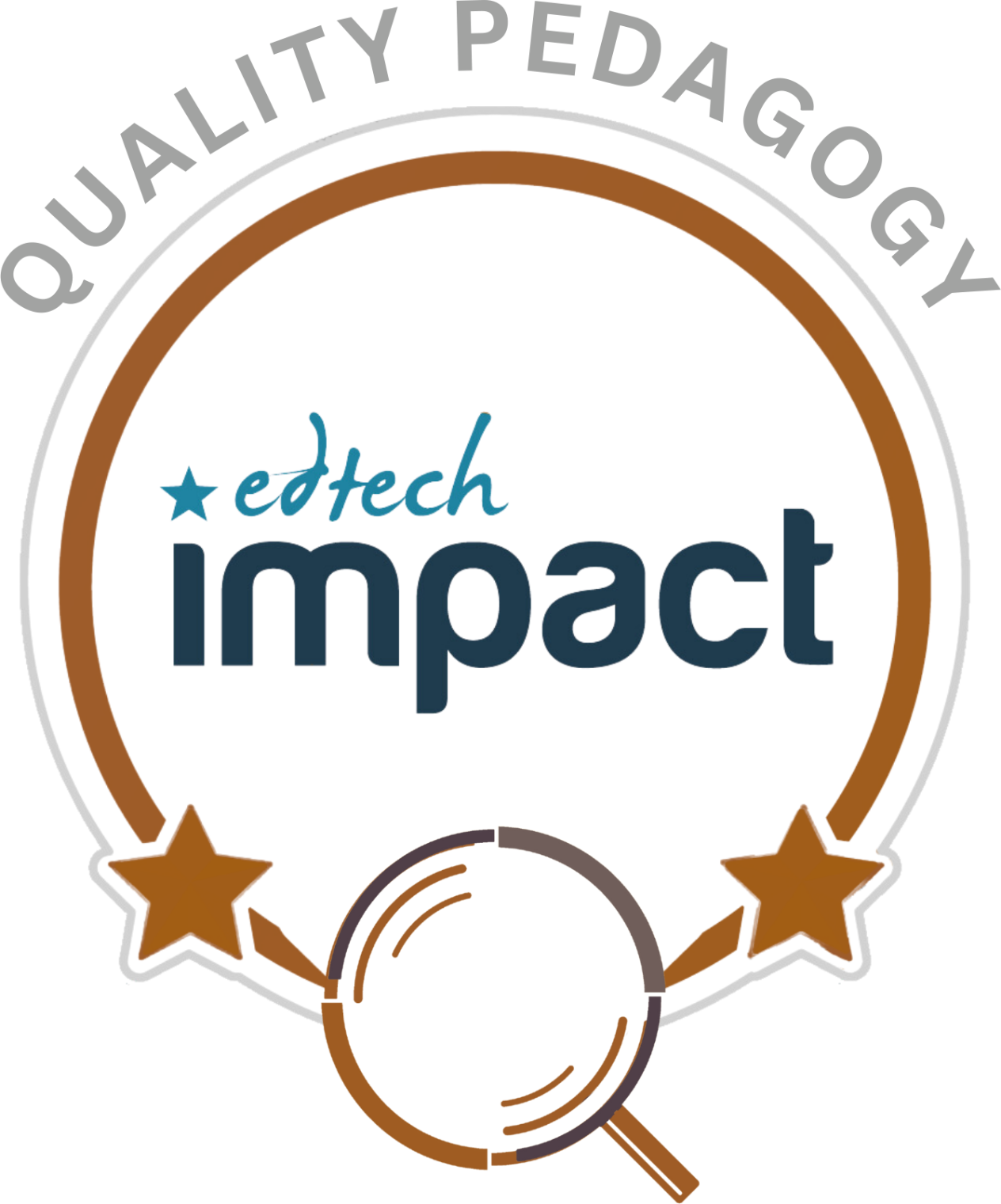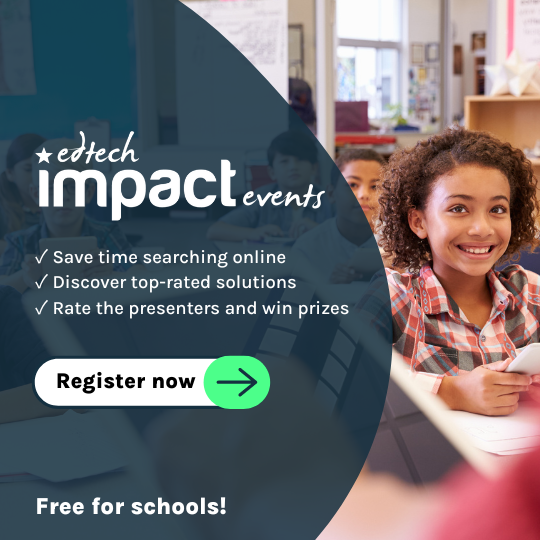What is MindHub?
MindHub is a network of innovative programming academies for children and teenagers aged 6 to 15. They offer classroom-based and online courses, coding summer camps, and workshops.
Their self-developed curriculum is divided into segments based on students’ ages. Through their gamified and experiential learning approach, students work collaboratively in teams on various projects, fostering creativity, problem-solving skills, and teamwork.
Compare MindHub with...
Pedagogy
Certified by Education Alliance Finland,
EAF Evaluation is an academically-backed approach to evaluating the pedagogical design of a product. EAF evaluators assess the product using criteria that covers the most essential pedagogical aspects in the learning experience.
PassiveActive
MindHub Curriculum provides a solid framework of pre-curated material for programming. Learning happens through demonstrations and projects, where students execute their own code and then can experiment with it. MindHub offers options for tasks, so the teacher can adjust the course and content to users needs.
RehearseConstruct
e curriculum doesn't assume learning to happen through observation only, more by doing and experimenting. The product is suitable for a wide range of users and offers comprehensive basic information on programming to get started and build further knowledge. You can succeed in the tasks and learn by following the demonstration , and the tasks build a clear progression. There is a mix of introductory games and discussions, and a choice of programming projects with browser based tools or robots.
LinearNon-linear/Creative
The course progress can be scheduled accurately. All task are timed in a professional manner that leaves enough time for surprises, questions and experimentation. The main concepts are slowly built on top of the previously learned contents, even if there are multiple different project options for each topic. Some tasks start with an introductory game/activity, but some go straight to demonstrating code.
IndividualCollaborative
As most of the lessons are build for classroom learning, there is a chance for face-to-face interaction to be part of the learning experience. The kids are programming in pairs, helping and supporting each other. At the end of the final project, the kids are presenting their findings and discussing their solutions, as well as getting feedback from their peers. Programming itself is best practiced individually, where everyone can learn by doing, so this approach is justified.
Learning goals
Certified by Education Alliance Finland
The supported learning goals are identified by mapping the product against the selected reference curriculum and soft skills definitions most relevant for the 21st century.
- Practicing strategic thinking
- Practicing fine motor skills
- Practicing logical reasoning, algorithms and programming through making
- Understanding and practicing safe and responsible uses of technology
- Using technological resources for finding and applying information
- Using technology as a part of explorative and creative process
- Understanding technological system operations through making
- Building common knowledge of technological solutions and their meaning in everyday life
- Practicing keyboard skills and touch typing
- Practicing to use information independently and interactively
- Learning to understand and interpret diverse types of texts
- Learning to acquire, modify and produce information in different forms
- Using technology as a part of explorative and creative process
- Practicing logical reasoning to understand and interpret information in different forms
- Realizing the connection between subjects learned in free time and their impact to skills needed at worklife
- Practicing versatile ways of working
- Practicing decision making
- Encouraging positive attitude towards working life
- Enabling the growth of positive self-image
- Learning to understand the meaning of rules, contracts and trust
- Learning decision-making, influencing and accountability
- Encouraging to build new information and visions
- Practicing to notice links between subjects learned
- Learning to combine information to find new innovations
- Encouraging to build new information and visions
- Learning to build information on top of previously learned
- Practicing to notice causal connections
- Encouraging the growth of positive self-image
- Learning to face failures and disappointments
- Discuss real-world cybersecurity problems and how personal information can be protected.
- Model how information is broken down into smaller pieces, transmitted as packets through multiple devices over networks and the Internet, and reassembled at the destination.
- Use public domain or creative commons media, and refrain from copying or using material created by others without permission.
- Seek diverse perspectives for the purpose of improving computational artifacts.
- Brainstorm ways to improve the accessibility and usability of technology products for the diverse needs and wants of users.
- Discuss computing technologies that have changed the world, and express how those technologies influence, and are influenced by, cultural practices.
- Use data to highlight or propose cause-and-effect relationships, predict outcomes, or communicate an idea.
- Organize and present collected data visually to highlight relationships and support a claim.
- Determine potential solutions to solve simple hardware and software problems using common troubleshooting strategies.
- Model how computer hardware and software work together as a system to accomplish tasks.
- Describe how internal and external parts of computing devices function to form a system.
- Describe choices made during program development using code comments, presentations, and demonstrations.
- Take on varying roles, with teacher guidance, when collaborating with peers during the design, implementation, and review stages of program development.
- Test and debug (identify and fix errors) a program or algorithm to ensure it runs as intended.
- Observe intellectual property rights and give appropriate attribution when creating or remixing programs.
- Use an iterative process to plan the development of a program by including others' perspectives and considering user preferences.
- Modify, remix, or incorporate portions of an existing program into one's own work, to develop something new or add more advanced features.
- Decompose (break down) problems into smaller, manageable subproblems to facilitate the program development process.
- Create programs that include sequences, events, loops, and conditionals.
- Create programs that use variables to store and modify data.
- Compare and refine multiple algorithms for the same task and determine which is the most appropriate.
- Practicing to notice causal connections
- Developing problem solving skills
- Practicing to use arts as a way to express
- Practicing to use imagination and to be innovative
- Practicing to use imagination and to be innovative
- Encouraging students to be innovative and express new ideas
- Practicing to improvise
- Practicing creative thinking
- Creating requirements for creative thinking
- Learning to find the joy of learning and new challenges
- Practicing to evaluate one's own learning
- Practicing to set one's own learning goals
- Practicing to take responsibility of one's own learning
- Practicing to find ways of working that are best for oneself
- Practicing persistent working
- Learning to notice causal connections
- Practising visual recognition
- Practicing categorization and classification
- Practicing strategic thinking
- Practicing to plan and execute studies, make observations and measurements
- Using technology resources for problem solving
- Practicing keyboard skills and touch typing
- Practicing to find, evaluate and share information
- Practicing to use information independently and interactively
- Practising to understand visual concepts and shapes and observe their qualities
- Learning to acquire, modify and produce information in different forms
- Understanding and interpreting of matrices and diagrams
- Using technology as a part of explorative and creative process
- Experiencing and exploring sounds and music from different sources
- Practicing logical reasoning to understand and interpret information in different forms
- Realizing the connection between subjects learned in free time and their impact to skills needed at worklife
- Connecting subjects learned at school to skills needed at working life
- Practicing versatile ways of working
- Practicing decision making
- Learning to plan and organize work processes
- Practicing time management
- Learning to use foreign language in work context
- Encouraging positive attitude towards working life
- Enabling the growth of positive self-image
- Learning to understand the meaning of rules, contracts and trust
- Practicing to use foreign language as a communication tool
- Practicing communication through different channels
- Learning decision-making, influencing and accountability
- Practicing to work with others
- Encouraging to build new information and visions
- Learning about different languages
- Learning to understand people, surroundings and phenomenons around us
- Practicing to notice links between subjects learned
- Learning to combine information to find new innovations
- Encouraging to build new information and visions
- Learning to build information on top of previously learned
- Practicing to notice causal connections
- Encouraging the growth of positive self-image
- Learning to face failures and disappointments
- Use data to highlight or propose cause-and-effect relationships, predict outcomes, or communicate an idea.
- Organize and present collected data visually to highlight relationships and support a claim.
- Describe choices made during program development using code comments, presentations, and demonstrations.
- Test and debug (identify and fix errors) a program or algorithm to ensure it runs as intended.
- Decompose (break down) problems into smaller, manageable subproblems to facilitate the program development process.
- Create programs that include sequences, events, loops, and conditionals.
- Create programs that use variables to store and modify data.
- Compare and refine multiple algorithms for the same task and determine which is the most appropriate.
- Practicing to create questions and make justifiable arguments based on observations
- Practicing to notice causal connections
- Developing problem solving skills
- Practicing to use arts as a way to express
- Practicing to use imagination and to be innovative
- Practicing to use imagination and to be innovative
- Encouraging students to be innovative and express new ideas
- Practicing to improvise
- Practicing creative thinking
- Creating requirements for creative thinking
- Learning to find the joy of learning and new challenges
- Practicing to find ways of working that are best for oneself
- Practicing persistent working
- Learning to notice causal connections
- Practising visual recognition
- Practicing to observe spoken and written language
- Practicing categorization and classification
- Practicing fine motor skills
- Using technology as a part of explorative process
- Using technology for interaction and collaboration
- Practicing logical reasoning, algorithms and programming through making
- Understanding and practicing safe and responsible uses of technology
- Using technology as a part of explorative and creative process
- Understanding technological system operations through making
- Practicing strategic thinking
- Practicing to notice causal connections
- Learning to recognise and evaluate arguments and their reasonings
- Developing problem solving skills
- Learning to notice causal connections
- Practicing categorization and classification
- Practicing logical reasoning, algorithms and programming through making
- Understanding technological system operations through making
- Using technology resources for problem solving
- Building common knowledge of technological solutions and their meaning in everyday life
- Connecting subjects learned at school to skills needed at working life
- Learning to plan and organize work processes
- Encouraging to build new information and visions
- Practicing to notice links between subjects learned
- Encouraging to build new information and visions
- Learning to build information on top of previously learned
- Practicing to notice causal connections
- Model how computer hardware and software work together as a system to accomplish tasks.
- Describe how internal and external parts of computing devices function to form a system.
- Observe intellectual property rights and give appropriate attribution when creating or remixing programs.
- Use an iterative process to plan the development of a program by including others' perspectives and considering user preferences.
- Decompose (break down) problems into smaller, manageable subproblems to facilitate the program development process.
- Create programs that include sequences, events, loops, and conditionals.
- Create programs that use variables to store and modify data.
- Compare and refine multiple algorithms for the same task and determine which is the most appropriate.
- Learning to find the joy of learning and new challenges
- Practicing persistent working




